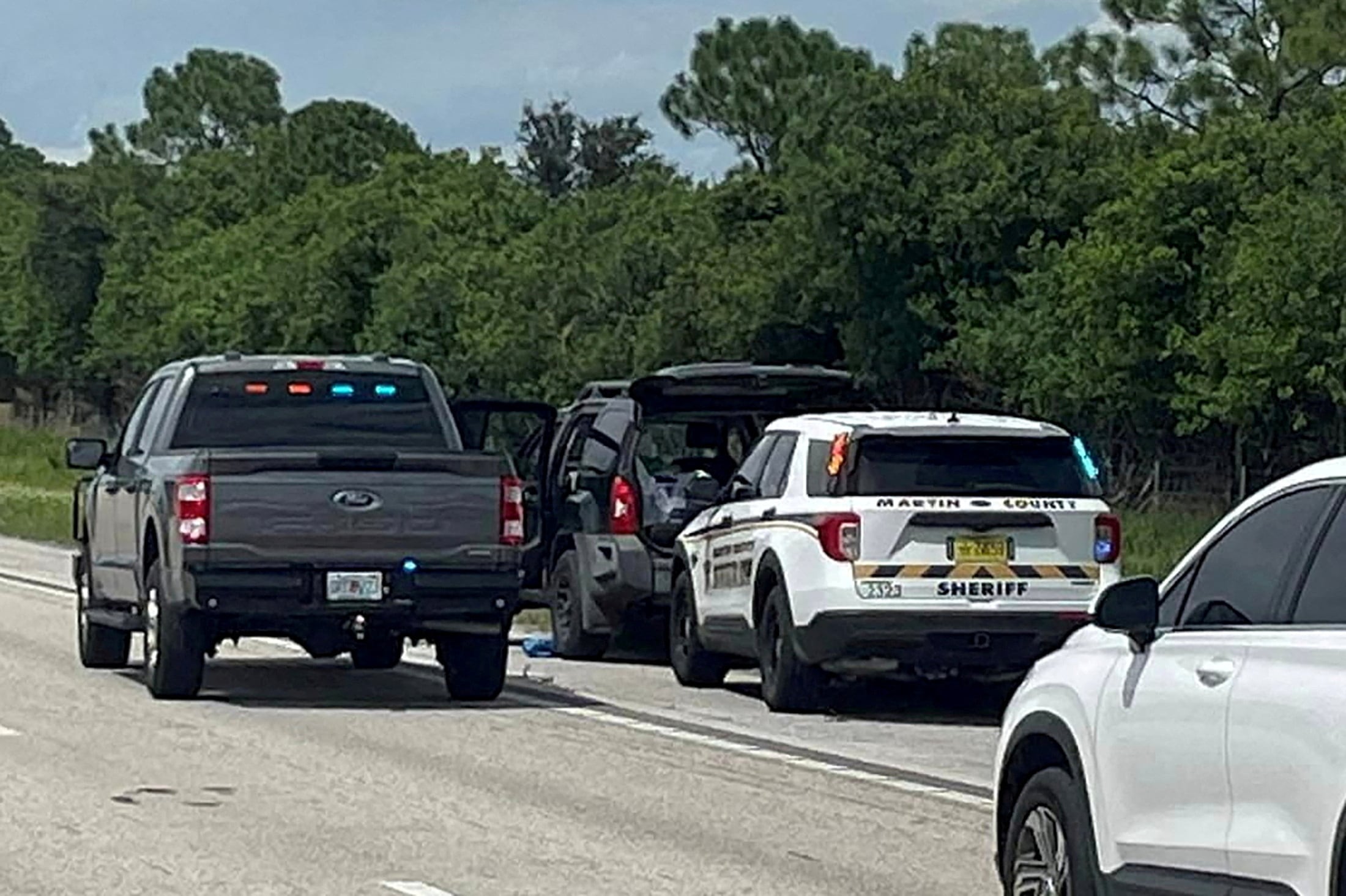After years of negotiations, a deal has been agreed on between the state and federal government to keep San Onofre, a popular recreational space wedged between Orange County and San Diego, open to the public as a state park.
The 25-year lease agreement was signed on Friday, Aug. 30, just a day before the Aug. 31 deadline, following a three-year extension in 2021 when the original 50-year lease expired.
The lease renewal is welcome news for users and advocacy groups pushing to keep public access to the popular park, which includes world-class waves considered some of the best in the country, hiking and mountain biking trails and campgrounds where an estimated 2.5 million people visit each year.
The original 1971 lease – a whopping $1 for 50 years – dates back to President Richard Nixon’s “Legacy of Parks” program, which sought to give the public a place to escape urban sprawl, a way to make use of surplus federal land.
State Parks Superintendent Kevin Pearsall called the new agreement a complex deal that required countless hours of negotiating between the Department of the Navy, the Department of Defense and the state, taking into consideration laws that have changed since 1971.
“It was, as with most negotiations, an incredible balancing act between the state and federal laws that were so different when this lease was originally created in 1971,” Pearsall said. “The main focus, on both parts, was to always provide public access to the land.”
One of the biggest challenges was federal law that now requires fair-market value for the sale or lease of military land. After years of back and forth, the ultimate value was agreed to be about $3.2 million a year, or about $90 million over the life of the new lease, which also counts in the three-year extension dating back to 2021.
The state won’t make payments, instead in-kind credits will cover the lease.
In addition to allowing the military to train on some State Parks land through California, the energy credit the state will give to the military for future projects makes up about half the cost. The state will also use some of its own resources for law enforcement and environmental management around Camp Pendleton.
The footprint has also changed, with an area near the popular surf breaks Lower and Upper Trestles at Basilone Road taken out of the lease agreement, however public access to use those areas will not change, with State Parks and the federal government signing an off-lease access agreement for the same 25-year period.
Another area near the rear of the property popular among mountain bikers will also now be under an off-lease access agreement.
California’s Natural Resources Secretary Wade Crowfoot called the lease signing a “huge milestone and a really exciting moment for everyone who loves (San Onofre) State Beach.”
“It’s such a special place, gorgeous setting, epic surf breaks, this remarkable community of users who have enjoyed this place for decades,” Crowfoot said. “This incredible beach that has been providing access for the last 50 years will continue doing so for decades to come.”
Crowfoot said he’s visited the location several times in recent years, gaining a strong appreciation for its specialness.
“We’ve been working really hard, hand-in-hand with the Navy and the Marines for the last three years,” he said. “And I am so grateful that we got it done just in time.”
Crowfoot credited Congressman Mike Levin, who over the years has helped nudge both groups to get to the finish line, as well as Assistant Secretary of the Navy for Energy, Installations & Environment Meredith Berger, who worked from Washington, D.C. to make sure it was signed ahead of the deadline.
“Our teams were always focused on the same North Star, which is enabling the continuation of the state beach. However, there were a ton of legal and physical complexities to work through,” he said. “We are satisfied with where we ended up. It was important that the lease works for the Navy and works for State Parks.”
“This is a really special moment,” he said.
Levin, in a statement, called the state beach a “California treasure.”
“I’m elated that we’ve reached a new long-term lease agreement that ensures Orange and San Diego County residents can continue to access and enjoy this beach and surf spot for years to come,” he said, thanking the Department of Navy, Marine Corps Base Camp Pendleton, California State Parks, as well as community groups San Onofre Parks Foundation and the Surfrider Foundation that fought to ensure public access. “This new lease agreement is a win for the millions of annual visitors, for our military, for our environment, and for our community.”
Berger called the agreement a “testament to the incredible partnership between the Marines and the San Onofre community.”
“For the Department of the Navy, our defense communities are critical to our success, and the State of California is a great partner,” Berger said in a statement. “I’m proud of the effort that our teams put in to find a way forward on a place we both value: San Onofre beach.”
Among the most sought after sections of the State Park is the San Onofre Surf Beach, where on a recent day Pat Quilter waited patiently in line for a spot on the sand in his banana yellow 1970s Fiat Chalet, the retro vehicle’s roof replaced with a wooden surfboard decor that harkens back to an earlier era.
One car in, one car out. That’s the method to get into this coveted slice of coast, where people are willing to wait hours just to be able to spend an afternoon at this tucked-away beach.
The vehicle’s groovy vibe matches San Onofre’s surf beach, a unique stretch of coast that gives visitors a salty taste of what the laid-back, California beach life was like decades ago.
“It’s the last of the old-school California beaches, where you park on the dirt right next to the sand,” said Quilter, who was heading down to the beach to play ukulele in the “Bamboo Room,” a tucked away enclave on the sand steps from the sea where musicians gather each Wednesday to play Hawaiian-style music, a tradition that dates back even older than his vehicle.
“It just refreshes the spirit.”
San Onofre has a rich history, the native Acjachemen called the land home thousands of years before surfers started making the pilgrimage to San Onofre’s long, rolling waves.
Around the beginning of the century, the beach became a popular fishing camp before surfers with long wooden boards discovered its waves.
For a while, the waves remained a secret, mostly hidden by big sandy cliffs. But as word spread, more and more surfers showed up to ride the Waikiki-like waves.
The Marine Corps bought the land during World War II from private landowners for $4.7 million, with about 160 square miles – plus 16 miles of coast starting at San Clemente’s southern border down to Oceanside – acquired in the deal, much of it becoming Camp Pendleton, according to the San Onofore Parks Foundation’s website, which formed in 2008 to help preserve and educate the public about the area.
During the war, the beach closed to surfers, but after the war ended commanding officers would often turn a blind eye to wave riders until the late ’40s and early ’50s, when crowds were causing conflict with the military.
In 1952, surfers created the San Onofre Surf Club, a select group allowed on the military property provided they had a sticker on their windshield to access the surf beach, according to the Foundation.
It wasn’t long before surfers discovered the perfect, peaky waves at nearby Lower Trestles, but that area was still off-limits. Longtime surfers still tell stories of being run out by military personnel, who sometimes confiscated surfboards or gave citations.
The land would become the first in the “Legacy of Parks” program initiated by President Richard Nixon – who had his “Western White House” on San Clemente’s southern border – which sought to give the public a place to escape urban sprawl using surplus federal land.
In 1971, the State Parks system got a sweet deal from the Department of Navy for 6.5 miles of coast, plus some inland space to create the San Mateo campgrounds and trails. The original lease was for 25 years, though a few years later the Trestles surfing area and another 25 years were added.
The new lease marks a major milestone for San Onofre Parks Foundation founders Steve Long and Bob Mignogna, who in 2016 formed a “lease renewal task force” to be a liaison between the federal and state governments, but also to keep the public involved and informed.
The goal from the start wasn’t to create an uproar like the “Save Trestles” movement that halted plans for a toll road in the area, but rather a “gentler nudge” to keep the area open to the public while lobbying behind the scenes, Long said.
“We saw the power of uniting the people. We knew we could amass a crowd. We did not want to be adversarial, at all,” Long said. “We have been told if we had not taken this on, there would have been a different outcome. The anticipation was that the military intended to run the park. It would have had a whole different culture, look and feel…the outcome could have been very different.”
For Long, who was a lifeguard for 34 years and retired as the San Onofre State Parks supervisor, it was a chance to share stories of how special the area is to so many people.
“I have dedicated a good part of my life to becoming a historian of the park,” he said.
The mountain biking the park offers is one of the best-kept secrets in Southern California, he noted. There is also the wildlife and wetlands, and the camping in the inland valley and the coastal bluffs.
There’s the surf beach, which he calls the “crucible of surfing culture,” and Lower Trestles, one of the best waves on the mainland.
One of his goals is to tell stories of the original occupants, the native Acjachemen, who lived off the land and sea dating back 3,000 years and still hold sacred ceremonies there.
“They often are overlooked, and we want to help correct that,” he said.
While it’s important to share the past, it’s also time to start thinking about the future.
“We have issues ahead of us, between sea level rise and coastal erosion, nuclear-spent fuel – the work isn’t done,” Long said, referring to the San Onofre Nuclear Generating Station spent fuel being stored in the bluffs until a home away from the ocean can be found.
Mignogna said the lease allows his children, and maybe one day even his great-grandchildren, to enjoy the special beach he surfs nearly every day. And it’s not just for nearby San Clemente residents to enjoy, he noted.
“We looked at it as a national and international issue,” he said, noting that when the World Surf League’s finals will be naming world championships at Lower Trestles in coming days, thousands will be on the sand, but millions more will be watching on live streams from across the globe.
Caitlin Simmers of Oceanside competes during the Rip Curl WSL Finals in San Clemente on Saturday, Sept. 9, 2023. The wave at Lower Trestles is considered one of the best on the mainland. (Photo by Mindy Schauer, Orange County Register/SCNG)
“It’s a natural resource that is global in its appeal,” Mignogna said.
Mignogna also recognizes that attention now needs to shift to the future. Just six years ago, there were 330 parking spots at the surf beach, now down to 130 due to the erosion issues plaguing the beach, like others stretches of coast across California.
“So we need people to understand that the fight is not over, just that piece of the fight is over,” Mignogna said.
Surfrider Foundation’s Senior Environmental Director Zach Plopper said the lease signing is a reason to celebrate, but agrees more attention needs to be put on the future of the area.
Just a few weeks ago, Surfrider held a stakeholder gathering to open dialog on what people value most at the site and how to address needs and consider nature-based solutions, such as living shorelines to battle erosion troubles.
“With climate change and with sea-level rise, we’re going to see those issues flare up more and more,” Plopper said. “We’re at a really important opportunity now where that’s really being recognized by the users of San Onofre, that we need to do things differently in terms of coastal management there. We don’t know exactly what that looks like yet, and that’s why we want to get people together to start having those conversations.”
Related Articles
Contaminated sediment proposed for burial in Newport Harbor likely go to Port of Long Beach instead
What’s the best day to hit the beach for the ‘unofficial’ end of summer?
San Onofre inspection notes two low-level violations
25-ton fin whale returned to ocean after its death on Torrance Beach
US Open of Surfing ends with action-packed finals

























